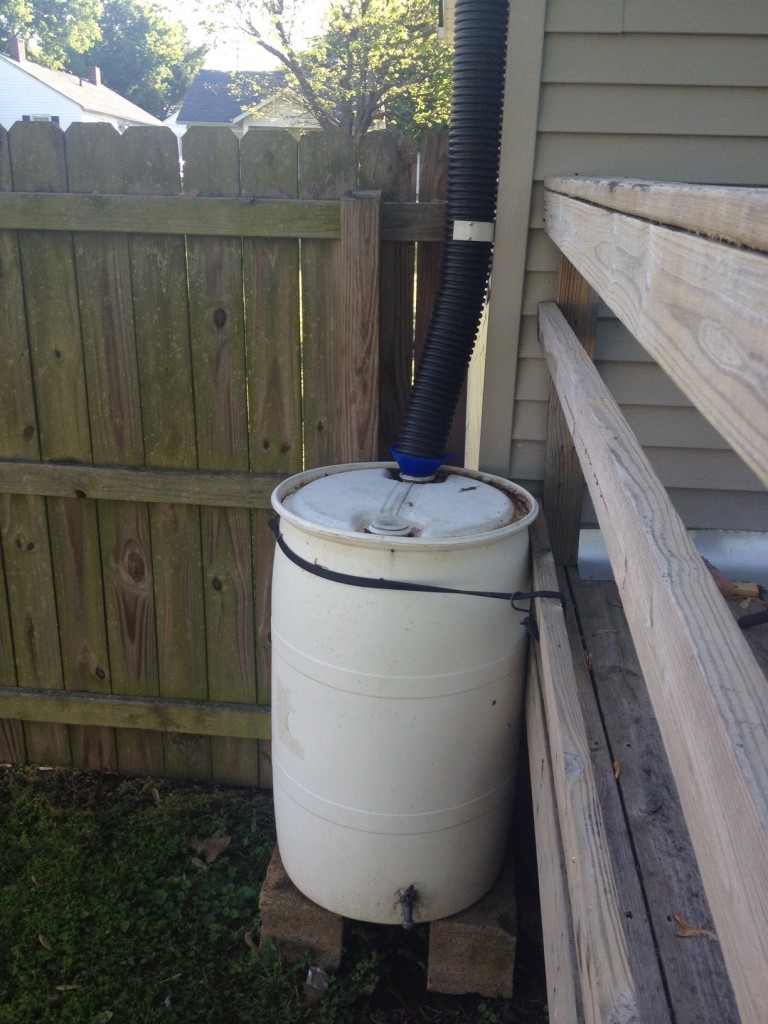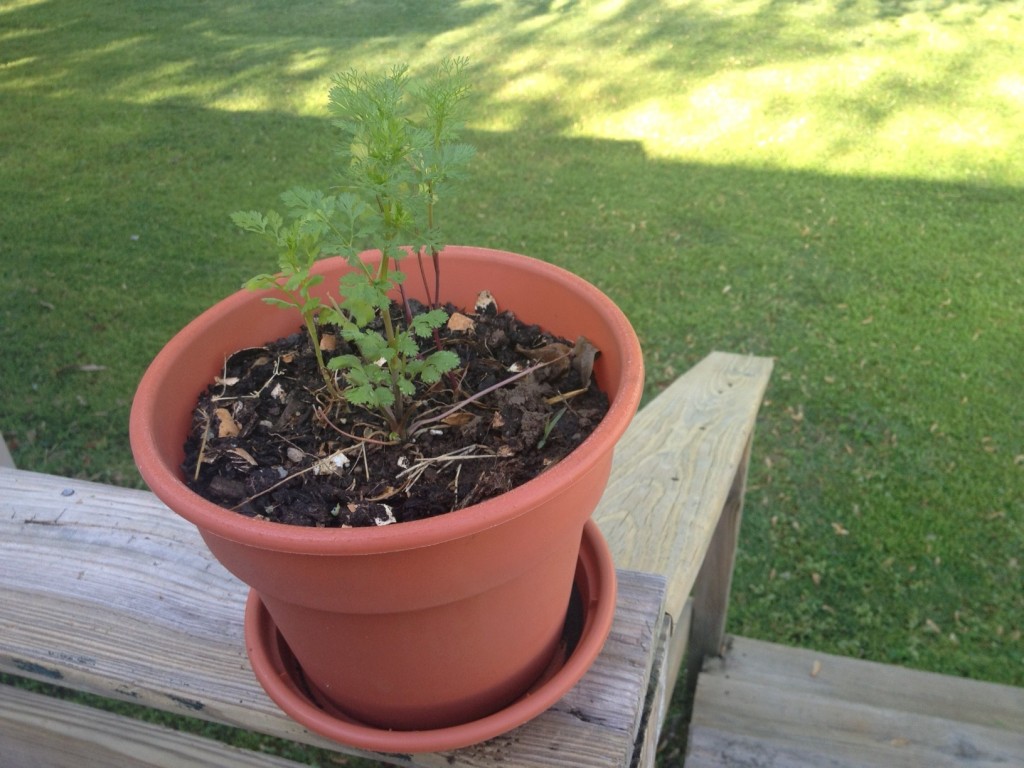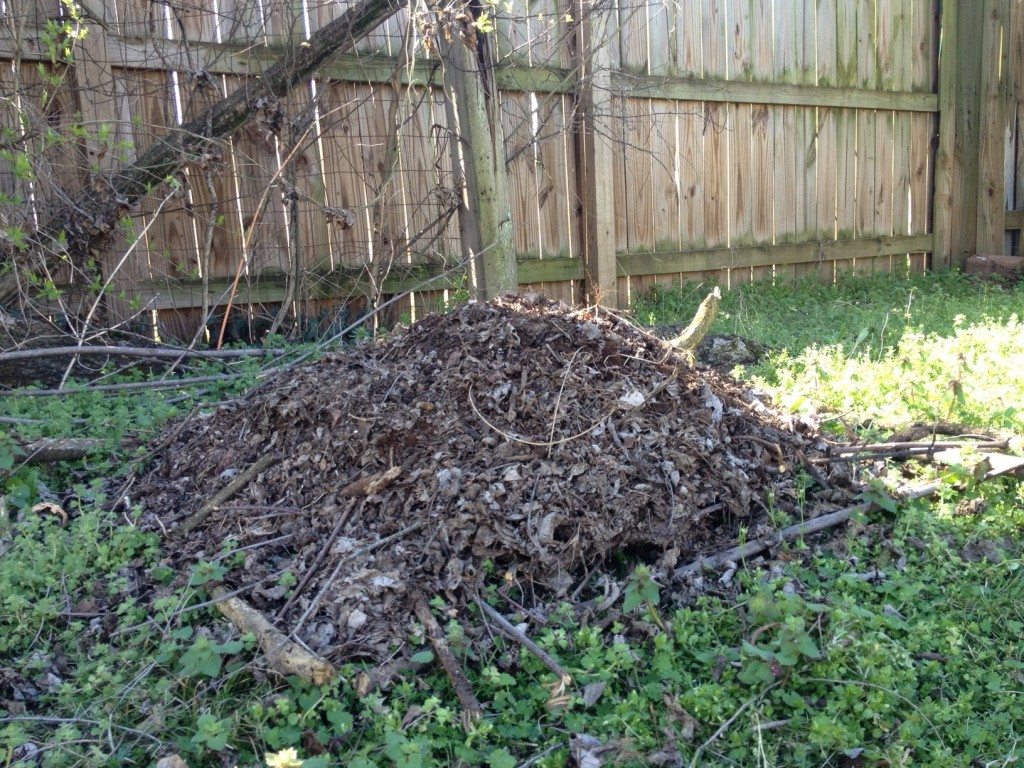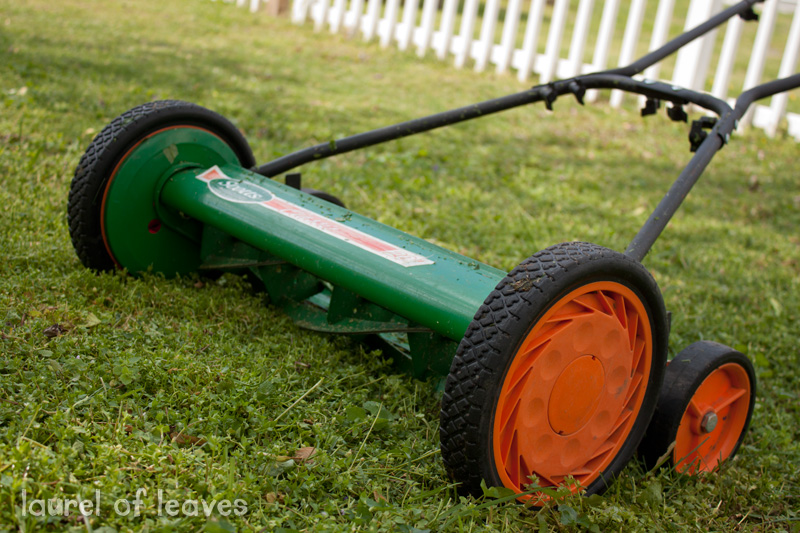5 Simple Tips to Green Your Backyard
This post is part of a series in honor of Earth Day on April 22 – Simple Tips for Going Green. You can find other great posts related to going green on these blogs:
I am all about baby steps when it comes to starting your journey in natural living. But I’m also all about challenging yourself to take the next step. And the next step. If going green for you looks like switching from Windex to Seventh Generation, then by all means, start there. But there is so much more to consider. So much more that truly addresses the root of an issue and makes a change that is truly sustainable (i.e. a practice that can be sustained or repeated long term without depletion or harm).
So with that disclaimer, here are 5 Simple Tips to Green Your Backyard. They may not seem simple to you yet. You might need to start with smaller baby steps. Or maybe these are too simple for you. Perhaps you’ve far exceeded me in practice on your urban homestead or farm. I look to you for inspiration to push myself even farther back to my roots!
Without further ado, here I offer you 5 Simple Tips to Green Your Backyard:
Nix the Sprays
I mean it. Just quit it. Those chemicals are toxic, they leach into the soil and eventually the water supply, they contribute to cancer in household pets, they’ve been concocted by greedy and immoral companies who are out to patent life and make a crap ton of money with zero regard as to the consequences, and they just plain smell horrible.
And who really cares if there are a few weeds hanging around? You might be surprised to know that many plants we call ‘weeds’ are actually herbs with powerful healing properties (dandelions, anyone?). Anyway, there are far better things you can be doing with your lawn than spending all that energy and money trying to manicure it. Such as my next point:
Grow Your Own Food
If you really want to talk about being sustainable outdoors, then grow your own food. Sure, you can feel more green and sustainable if you simply buy organic food from the grocery store. And I hate to burst your bubble, but that ‘organic’ food, first of all, may not be all that different from conventional produce. Giant monocrop farms (industrial agriculture outfits that grow only one kind of food) are still terrible for the soil and can often still use certain chemical fertilizers, pesticides, or herbicides. There are all kinds of loopholes in the organic certification process. Plus, all that organic produce has most likely traveled from the other side of the country (or even the world) to reach your grocery store. Just think of all the energy it required (in the form of cheap oil, etc.) to transport it! Doesn’t sound so green after all, huh?
There are all kinds of different expressions of this particular tip that will help you become greener and truly more sustainable in the way you live. The best way to go? Start a veggie garden. Grow your own produce in the backyard. You may even consider getting some backyard chickens to eat food scraps and fertilize the garden for you.
If that’s not an option due to space limitations, grow some veggies and herbs in containers on your back deck or patio. Tomatoes, bell peppers, hot peppers, basil, mint, thyme, cilantro. All of those do very well in containers.
If you absolutely can’t bring yourself to grow anything (or you’ve just become really good at making excuses), then at least do your best to buy local produce. Join a CSA (Community Supported Agriculture) or frequent your local farmer’s market. Find one near you on the Local Harvest website.
Start Composting
Even if you can’t grow your own food, I know you have food scraps. Don’t throw them in the trash can where they will end up in a landfill somewhere amongst all kinds of other non-biodegradable material. Find a container with a lid (an old bucket or something) that you can keep handy in the kitchen. Throw all your fruit and veggie scraps in there (leaving out meat, dairy, and cooked food). Then find a nice shaded spot in the backyard to start a compost pile. There are at least a thousand different ways to make a compost pile, but one of my favorites is the lasagna heap method.
Start with a layer of small twigs to allow the pile to breathe a bit from the bottom. Then layer on some dead leaves, straw, wood chips, or other ‘brown’ materials full of carbon. Alternate with layers of food scraps and grass clippings. These are your ‘green’ materials full of nitrogen. You want at least three times as much ‘brown’ as ‘green.’
Let your pile sit for a few weeks, then turn it over using a shovel. The bottom should be a rich brown soil full of microbial goodness for your garden! If you don’t have a garden, find a friend or family member who needs it for their garden, or type in your zip code on FindaComposter.com.
Set Up a Rain Barrel
 This also relates to next week’s theme of SAVING green while going green, but why would you shell out money to the water company to water your veggies or your flower garden when plenty of rain falls from the sky? You need only save it in a handy rain barrel. You can purchase them new from garden centers or places like Whole Foods for around $100. Or search the Internet for gently used ones. We bought ours from a community garden where we would volunteer that was replacing theirs. Plus, tap water is full of chemicals like chlorine, fluoride, and traces of pharmaceutical medications like statin drugs and birth control pills. I don’t know about you, but I don’t want my squash sucking up those chemicals along with the water they so desperately need.
This also relates to next week’s theme of SAVING green while going green, but why would you shell out money to the water company to water your veggies or your flower garden when plenty of rain falls from the sky? You need only save it in a handy rain barrel. You can purchase them new from garden centers or places like Whole Foods for around $100. Or search the Internet for gently used ones. We bought ours from a community garden where we would volunteer that was replacing theirs. Plus, tap water is full of chemicals like chlorine, fluoride, and traces of pharmaceutical medications like statin drugs and birth control pills. I don’t know about you, but I don’t want my squash sucking up those chemicals along with the water they so desperately need.
Use a Reel Mower
I’ll be honest. When my husband first started talking about wanting one of these babies, I thought we would have to find an old used one at a antique shop. I didn’t know they still made them today. But they do! And they are nothing like the ones your Dad or Grandfather tells horror stories about. Ours is a Scotts Classic 20″ version and it is ridiculously easy to push.
The blades actually cut the grass like scissors instead of ripping the grass apart, encouraging better growing habits for your lawn, including more grass and less weeds. There is no motor to maintenance, no gasoline to buy, no fumes to breathe in, and no being jostled around by the vibrations of the engine. Wake up at the crack of dawn to mow the lawn and you won’t even disturb your neighbor! You can read more about them here.
Which of these simple tips do you already put into practice? Are you inspired to try something new?
This post is linked to Homestead Barn Hop, Monday Mania, Simple Lives Thursday, Sunday School
Comments are closed.




Spectrum Mom
April 9, 2012 at 9:10 amHi, we definitely go for species biodiversity in the lawn and elsewhere, but I do poison poison ivy. I’m so allergic I can’t deal with it any other way. We use an electric mower. How long does the classic take?
Lori Winter
April 9, 2012 at 2:03 pmHi! I’ve not ever used an electric version, so I can’t speak to that specifically, but I honestly can’t imagine our reel mower takes any longer than a conventional one to finish the lawn. I love it!
Sarah
April 9, 2012 at 1:21 pmMy boys asked for a mower like that for their birthday a couple years ago. They love using it. Sometimes you can see 3 of them pushing on the mower to get it through the real thick grass.
Lori Winter
April 9, 2012 at 2:03 pmThat’s awesome Sarah! I bet that’s super cute seeing them all out there together :)
rebecca simmons
April 13, 2012 at 1:40 pmThis brings back memories. We had one of these when we lived downtown Atlanta and had .10 an acre of land with our house. It did work. And it was quite the conversation starter. But it was tough in patches that was more weeds than grass planted from seed. My husband was so glad to get rid of it when we moved to a new town with a big yard. I can see how kids would love it!
A Glance in the Rearview Mirror (April 2012)
June 22, 2012 at 10:42 pm[…] us posted simple tips to go green, save green, think green, and teach green. My contributions were 5 Simple Tips to Green Your Backyard, 20 Simple Ways to Save Money on Your Utility Bill, a (Non) Disposable Challenge, and a post […]